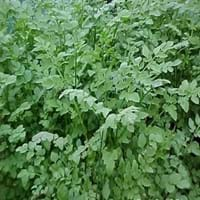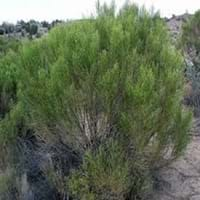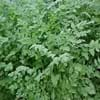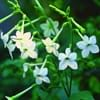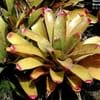Life Span
Perennial
Perennial
Type
Tender Perennial
Shrub
Origin
Southern Asia, Southeastern Asia, India, China, Japan, Australia
Hybrid origin, Southwestern United States
Types
Not Available
Not Available
Habitat
Bog Garden, Cultivated Beds, Ponds
riparian zones, Semi desert, Upland
USDA Hardiness Zone
9-11
8-10
AHS Heat Zone
Not Available
12-1
Sunset Zone
H1, 9, 14, 15, 16, 17, 18, 19, 20, 21, 22, 23, 24
7, 8, 9, 10, 11, 12, 13, 14
Habit
Spreading
Spreading
Flower Color Modifier
Bicolor
Not Available
Fruit Color
Not Available
creamy white
Leaf Color in Spring
Green
Green
Leaf Color in Summer
Green
Green
Leaf Color in Fall
Green
Green
Leaf Color in Winter
Light Green
Green
Leaf Shape
simple-pinnate or double-pinnate
Oblanceolate , Ovate
Plant Season
Summer, Fall
Spring, Summer, Fall, Winter
Sunlight
Full Sun, Partial Sun, Partial shade
Full Sun
Type of Soil
Clay, Loam, Sand
Clay, Loam, Sand
The pH of Soil
Acidic, Neutral, Alkaline
Acidic, Neutral, Alkaline
Soil Drainage
Poorly Drained
Well drained
Bloom Time
Late Summer, Early Fall
Spring
Tolerances
Drought
Drought, Dry soil, Heat Tolerance
Where to Plant?
Ground
Ground, Pot
How to Plant?
Divison, Layering, Seedlings, stem tip cuttings
Seedlings
Plant Maintenance
Medium
Medium
Watering Requirements
Needs Very high moisture
Needs very little water
In Summer
Lots of watering
Lots of watering
In Spring
Moderate
Moderate
In Winter
Average Water
Average Water
Soil pH
Acidic, Neutral, Alkaline
Acidic, Neutral, Alkaline
Soil Type
Clay, Loam, Sand
Clay, Loam, Sand
Soil Drainage Capacity
Poorly Drained
Well drained
Sun Exposure
Full Sun, Partial Sun, Partial shade
Full Sun
Pruning
Remove dead leaves
Cut back old stems to the ground, Remove damaged leaves, Remove dead branches, Remove dead leaves
Fertilizers
Apply 10-10-10 amount
can go long without fertilizers
Pests and Diseases
Aphids, Armyworm, Bacterial Blight, Damping off, Downy mildew
Pests and diseases free
Plant Tolerance
Drought
Dry Conditions, Dry soil, Heat And Humidity
Flower Petal Number
Single
Single
Fragrant Flower
Not Available
No
Fragrant Leaf
Not Available
No
Fragrant Bark/Stem
Not Available
No
Foliage Texture
Fine
Fine
Foliage Sheen
Matte
Glossy
Attracts
Bees, Flies, Insects
Butterflies
Allergy
no allergic reactions
Unknown
Aesthetic Uses
Bog Garden, Ground Cover
along a porch, deck or patio, Beautification, Ground Cover, Showy Purposes, Wild gardens
Beauty Benefits
Not Available
Not Available
Edible Uses
Yes
Sometimes
Environmental Uses
Air purification
Air purification
Medicinal Uses
Depurative, Febrifuge, Styptic
anti-inflammatory, Anti-oxidant, cholesterol-lowering
Part of Plant Used
Leaves, Root, Seeds
Twigs
Other Uses
Used as a seasoning in soups, useful as a ground cover
Can be made into a herbal tea
Used As Indoor Plant
No
No
Used As Outdoor Plant
Yes
Yes
Garden Design
Container, Edible, Groundcover, Herb / Vegetable, Water Gardens
Groundcover
Botanical Name
OENANTHE javanica
BACCHARIS 'Centennial'
Common Name
Java Water Dropwort, Water Celery, Water Parsley
desert broom , broom baccharis , greasewood
In Hindi
Water Celery
desert broom
In German
Wasser Sellerie
Wüste Besen
In French
Céleri d'eau
desert broom
In Spanish
El apio agua
escoba del desierto
In Greek
Σέλινο νερό
desert broom
In Portuguese
Aipo água
vassoura do deserto
In Polish
Seler Woda
desert broom
In Latin
Aqua Apium
desert broom
Phylum
Magnoliophyta
Magnoliophyta
Class
Magnoliopsida
Magnoliopsida
Family
Apiaceae
Asteraceae
Clade
Angiosperms, Asterids, Eudicots
Angiosperms, Asterids, Eudicots
Tribe
Oenantheae
Astereae
Subfamily
Apioideae
Not Available
Number of Species
Not Available
Importance of Water Celery and Desert Broom
Want to have the most appropriate plant for your garden? You might want to know the importance of Water Celery and Desert Broom. Basically, these two plants vary in many aspects. Compare Water Celery and Desert Broom as they differ in many characteristics such as their life, care, benefits, facts, etc. Every gardener must at least have the slightest clue about the plants he wants to plant in his garden. Compare their benefits, which differ in many ways like facts and uses. The medicinal use of Water Celery is Depurative, Febrifuge and Styptic whereas of Desert Broom is anti-inflammatory, Anti-oxidant and cholesterol-lowering. Water Celery has beauty benefits as follows: Not Available while Desert Broom has beauty benefits as follows: Not Available.
Compare Facts of Water Celery vs Desert Broom
How to choose the best garden plant for your garden depending upon its facts? Here garden plant comparison will help you to solve this query. Compare the facts of Water Celery vs Desert Broom and know which one to choose. As garden plants have benefits and other uses, allergy is also a major drawback of plants for some people. Allergic reactions of Water Celery are no allergic reactions whereas of Desert Broom have Unknown respectively. Having a fruit bearing plant in your garden can be a plus point of your garden. Water Celery has no showy fruits and Desert Broom has no showy fruits. Also Water Celery is not flowering and Desert Broom is not flowering . You can compare Water Celery and Desert Broom facts and facts of other plants too.
